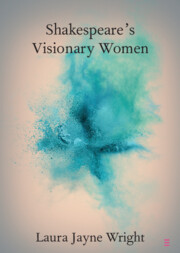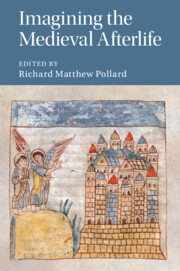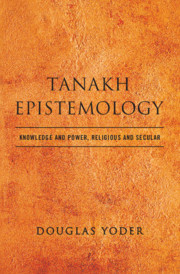15 results

Shakespeare's Visionary Women
-
- Published online:
- 11 December 2023
- Print publication:
- 21 December 2023
-
- Element
- Export citation
IV - Book of Amos
-
- Book:
- Hosea, Joel, and Amos
- Published online:
- 15 June 2023
- Print publication:
- 29 June 2023, pp 260-376
-
- Chapter
- Export citation
22 - The Demonological Framework of the Heavenly Kingdom of Great Peace
- from Part IV - Featured Conflicts
-
-
- Book:
- The Cambridge Companion to Religion and War
- Published online:
- 04 May 2023
- Print publication:
- 11 May 2023, pp 428-442
-
- Chapter
- Export citation
Chapter 11 - Hildegard of Bingen
- from Part III - The 11th and 12th Centuries
-
- Book:
- Introduction to Medieval Theology
- Published online:
- 15 April 2022
- Print publication:
- 24 March 2022, pp 148-157
-
- Chapter
- Export citation
3 - Becoming King
- from Part II - Creating Kingship
-
- Book:
- Paths to Kingship in Medieval Latin Europe, c. 950–1200
- Published online:
- 24 September 2021
- Print publication:
- 14 October 2021, pp 67-94
-
- Chapter
- Export citation
6 - Memory and Trauma:
- from Part I - Entwined Lives and Multiple Identities
-
-
- Book:
- Lives, Identities and Histories in the Central Middle Ages
- Published online:
- 24 September 2021
- Print publication:
- 07 October 2021, pp 94-106
-
- Chapter
- Export citation
2 - Visions
-
-
- Book:
- Vision
- Published online:
- 17 September 2021
- Print publication:
- 26 August 2021, pp 33-56
-
- Chapter
- Export citation
Chapter 12 - Visions and the Afterlife in Gregory’s Dialogues
- from Part IV - Notable Authors and Texts
-
-
- Book:
- Imagining the Medieval Afterlife
- Published online:
- 07 December 2020
- Print publication:
- 17 December 2020, pp 225-246
-
- Chapter
- Export citation
Chapter 7 - Visions of the Otherworlds in the Late Middle Ages, c. 1300–c. 1500
- from Part I - Chronological Surveys
-
-
- Book:
- Imagining the Medieval Afterlife
- Published online:
- 07 December 2020
- Print publication:
- 17 December 2020, pp 115-130
-
- Chapter
- Export citation
Chapter 3 - A Morbid Efflorescence: Envisaging the Afterlife in the Carolingian Period
- from Part I - Chronological Surveys
-
-
- Book:
- Imagining the Medieval Afterlife
- Published online:
- 07 December 2020
- Print publication:
- 17 December 2020, pp 40-61
-
- Chapter
- Export citation
Chapter 14 - The Afterlife in the Visionary Experiences of the Female Mystics
- from Part IV - Notable Authors and Texts
-
-
- Book:
- Imagining the Medieval Afterlife
- Published online:
- 07 December 2020
- Print publication:
- 17 December 2020, pp 264-285
-
- Chapter
- Export citation
Imagining the Medieval Afterlife: Introduction
-
-
- Book:
- Imagining the Medieval Afterlife
- Published online:
- 07 December 2020
- Print publication:
- 17 December 2020, pp 1-6
-
- Chapter
- Export citation

Imagining the Medieval Afterlife
-
- Published online:
- 07 December 2020
- Print publication:
- 17 December 2020

Tanakh Epistemology
- Knowledge and Power, Religious and Secular
-
- Published online:
- 28 April 2020
- Print publication:
- 21 May 2020
Chapter 5 - Flodoard’s Age of Miracles
-
- Book:
- Flodoard of Rheims and the Writing of History in the Tenth Century
- Published online:
- 05 September 2019
- Print publication:
- 05 September 2019, pp 188-217
-
- Chapter
- Export citation



